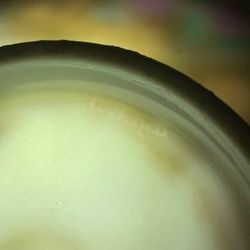
Завод Батенина. Период 1811-1838 гг. В 1811 году купец Ф.А. Девятов построил на Выборгской стороне фарфоровый завод, который три года спустя был приобретен Ф.С. Батениным. Имя нового владельца, значительно расширившего дело, получило не только предприятие, но и место, где оно располагалось - Батенин переулок (ныне это улица Александра Матросова).
Роскошные золоченые вазы и сервизы с характерными цветочными букетами и гирляндами стали визитной карточкой предприятия, так же как и часто встречающиеся в росписи архитектурные виды Петербурга, как бы подчеркивающие столичное местоположение завода.
Также использовались и античные сюжеты, и батальные сцены, и портреты членов царской фамилии. Батенинский фарфор пользовался широкой популярностью, чему способствовала и относительно невысокая цена на него. Себестоимость изделий снижали разными способами: покрывали поверхность глянцгольдом (жидким дешевым золотом), имитировали трудоемкую технику цировки (рисования агатовым карандашом по золоту) при помощи кисти. Но лучшие образцы батенинского фарфора получили заслуженное признание и у профессионалов - на Первой публичной выставке русских мануфактур 1829 года завод был удостоен
Большой золотой медали. Широкое распространение на раннем этапе работы производства получили чашки формы «большой цилиндр», кружки-бочонки, вазы в форме амфор и кратеров и сервизы тет-а-тет с особыми подносами. А когда после смерти Ф.С. Батенина в 1830 году производство перешло в ведение его наследников и опекунского совета, доминирующим стал стиль «шинуазри». Яркие многоцветные изображения зданий в восточном стиле, фантастических птиц и цветов, фигур «китайцев» на золотом фоне с цировкой «вермикуле» часто встречаются на вазах, чайниках и расширенных сверху и снизу невысоких чашках с вогнутым туловом.
Популярность батенинских изделий росла, но пожар 1838 года, уничтоживший все мастерские, положил конец этой яркой странице в истории русского фарфора. Завод закрылся, а все оставшиеся материалы были проданы заводу Корниловых, куда перешли и многие мастера.







